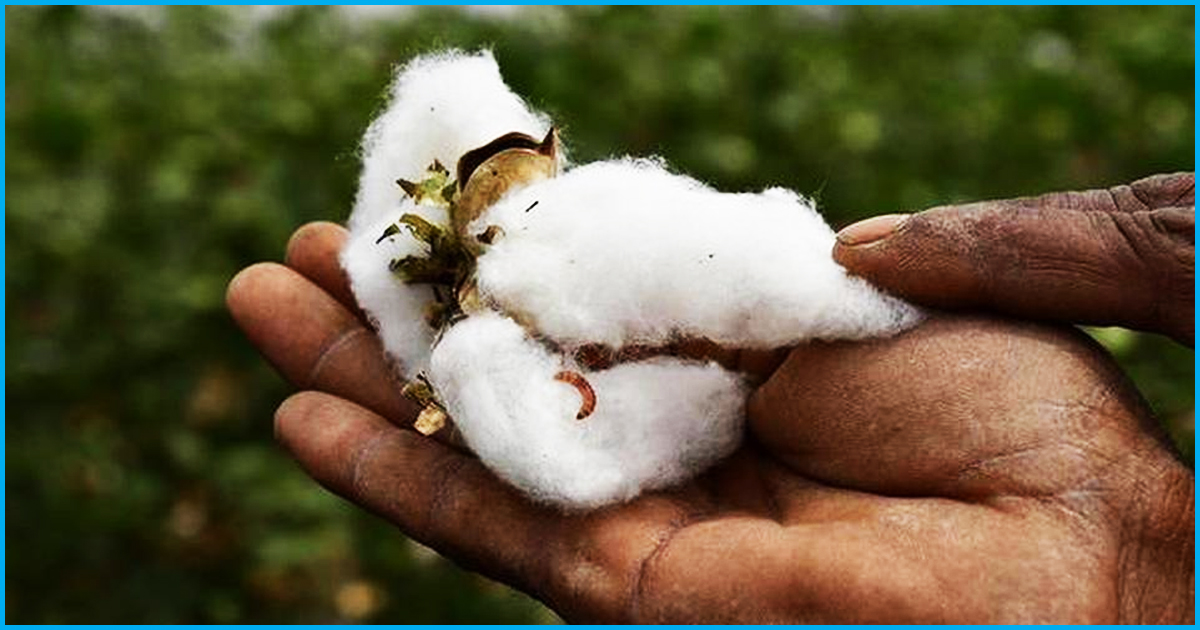
16 Yrs Since Bt Cotton Was Introduced For Commercial Cultivation - Was The Decision Correct?
18 Sep 2018 2:00 PM GMT
Bt Cotton was officially approved for commercial production in India in 2002. Since then, after 16 years, the share of Bt Cotton in the country’s cotton growing area has risen to more than 90%. This has made India one of the largest countries using Bt cotton.
There have been several claims attributing India’s rise as the world’s largest exporter of cotton and being the second largest cotton producer to the use of Bt Cotton. This has made a few sections of the society push for approval of Bt brinjal and Bt mustard as well. However, how much of these claims are actually true?
Yield increased just by 2.5% through Bt cotton
Mahesh Sharma, minister of state for environment, forest and climate change told the Rajya Sabha on February 5, 2018, that there has been “near doubling of cotton productivity” since the introduction of Bt cotton.
However, as per the Factchecker analysis of the claim, this statement is misleading and does not portray the complete picture.
As per data from the Cotton Corporation of India and Cotton Association of India, there has been a rise of 37% in the area under cotton cultivation and 40% rise in the cotton harvests when data from 2005-06 is compared with that of the year 2015-16. Also, in 2005-06, of the total cotton harvest, the proportion of Bt cotton was just 11.70% as compared to 92.17% in 2015-16. However, despite this, in a decade the yield has risen just by 2.5%.


A similar observation was also made by the Parliamentary Standing Committee on Science and Technology, Environment & Forests in their report titled, “Genetically Modified Crops and its Impact on Environment”. The report said, “the data provided by the government agencies speak only about the production and not the average yield in area which the Committee believes would be the true assessment of the potential of GM technology to find out as to what has been the increase in yield of cotton since the introduction of Bt cotton in the country.” The report further added that India’s cotton yield increased by 69% in 2000-2005 when the Bt cotton usage in India was just 6%, however, the increase in the yield between 2005-2015 was 10% even as Bt cotton usage rose to more than 90%. This implies that the claims that Bt cotton has significantly increased yield were dubious and should be subjected to further examination and clarification.
Further, in the year 2017, India ranked 32nd on the list of cotton yields in different countries. Of the 31 countries ranked above India, only 10 countries used GM cotton.

Increase in cost of farming and decrease in farmer income
In a report by Dr KR Kranthi, director of Central Institute for Cotton Research, Nagpur, published in the Cotton Association of India Weekly Publication, he quotes Ministry of Agriculture data as per which the average cost of cotton cultivation has increased by about 3.6 times between 2002 and 2011. In 2002, the average cost was Rs 15,961 per hectare and in 2011 the cost stood at Rs 71,115 per hectare.
A report by Dr AR Reddy for the Cotton Association of India Weekly Publication, the net income has seen a negative trend. In fact, farmers incurred a loss of more than Rs 6000 per hectare in 2014-15 even as 93% of total cotton grown was Bt cotton in the same period.
Possible Increase in usage of fertilizers and pesticides
One of the main motives for approving Bt cotton in 2002 by the then Atal Bihari Vajpayee-led government was to reduce the usage of pesticides. As Devinder Sharma, agricultural economist wrote in his blog titled “Farmers are being pushed deeper and deeper into a death trap”, the Bt cotton variety Bollgard-I brought by the company Monsanto in 2002, which promised of being resistant to bollworm insects had to be replaced by Bollgard-II in 2009 since the insect had by then become resistant to the earlier variety. In the blog, he points out, “In 2005, Rs 649-crore worth of chemical pesticides was used on cotton in India. In 2010, when roughly 92 per cent area under cotton shifted to Bt cotton varieties, the pesticides usage in terms of value increased to Rs 880.40 crore.”
Substantiating this, a 2007 analysis of cotton seeds collected from Punjab revealed that they had detectable residues of cotton pesticides, which are classified as moderately hazardous by the World Health Organisation.
Reportedly, the use of fertilizers too has gone up from 118kg/ha in 2005-06 to 270 kg/ha in 2015-16, which is a 128% increase.


Food-chain adversely affected
Cottonseed and cottonseed derivatives are a source of edible oil. As reported by Factchecker, studies have shown that with harmful pesticides used in cotton cultivation, much of this might have entered the food chain.
As per a study carried out by the Supreme Court’s Technical Expert Committee on the effect of Bt Cotton fodder on the lactation yield of cows showed that there is a possibility that the yield decreases in case of Bt Cotton.
“Expectations of enhanced cotton yields not realised”
In a The Hindu article, former Textile Secretary and former Cabinet Secretary to Government of India, TSR Subramanian who had previously supported the approval of Bt Cotton – the only genetically enhanced crop produced in India – says, “The alluring promises of higher yield and lower pesticide usage which induced many, including myself as Textile Secretary to the Government of India in the 1990s, to welcome Bt cotton have now been belied. Despite increased fertilisers and irrigation, the expectations of enhanced cotton yield have not been realised.”
He also added that most of the countries with higher cotton yields did not grow GM cotton.
– With inputs from Rohit Parakh
Also Read: Monsanto Cannot Patent BT Cotton Seeds In India, Says Supreme Court
 All section
All section













